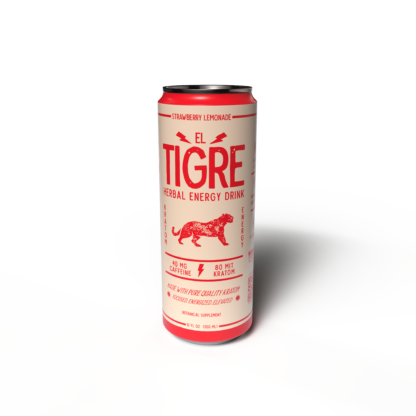Ingredients

Energy drinks are ubiquitous, providing a quick boost to those needing an extra push throughout their day. While traditional energy drinks rely on caffeine and sugar for their stimulating effects, a new contender has emerged: kratom-infused energy drinks. Kratom, a tropical plant with psychoactive properties, offers a different kind of energy lift, prompting comparisons between these two approaches.
Kratom Energy Drinks
Kratom energy drinks incorporate the powdered leaves or extracts of the kratom tree (Mitragyna speciosa) into their formulations. Unlike traditional energy drinks that primarily rely on caffeine, these drinks often feature kratom as the primary source of stimulation. These drinks may also contain other common energy drink ingredients such as guarana, ginseng, taurine, and various vitamins and minerals.
Traditional Energy Drinks
Traditional energy drinks typically contain a combination of caffeine, sugar, B vitamins, and taurine. Caffeine is the primary stimulant, providing alertness and energy. Sugar provides a quick burst of energy but can lead to crashes later on. B vitamins are often added to support energy metabolism. Taurine is an amino acid that may have some performance-enhancing effects.
Effects

Energy drinks have become a staple in modern society, offering a readily available boost for those seeking an extra edge. The traditional approach relies heavily on caffeine and sugar for its stimulating effects, but a new player has entered the scene: kratom-infused energy drinks.
Short-Term Effects
Both kratom energy drinks and traditional energy drinks can produce short-term effects related to increased energy, alertness, and focus.
- Traditional Energy Drinks
- Caffeine: Provides a rapid increase in alertness and energy, but can lead to jitters, anxiety, and insomnia with excessive consumption.
- Sugar: Offers a quick burst of energy followed by a potential crash, contributing to feelings of fatigue later on.
- B Vitamins: May contribute to improved energy metabolism but their effects in energy drinks are less pronounced than caffeine and sugar.
- Taurine: May enhance athletic performance and mental focus, but research on its benefits is ongoing.
- Kratom Energy Drinks
- Mitragynine and 7-hydroxymitragynine:** These alkaloids in kratom are responsible for its stimulating effects. They can produce feelings of alertness, energy, and euphoria. However, the intensity and duration of these effects can vary widely depending on individual factors and dosage.
- Other Kratom Alkaloids:** Kratom contains various other alkaloids that may contribute to its overall effects, but their specific roles in energy drinks are less well-defined.
Long-Term Effects
While both kratom and traditional energy drinks can offer a temporary boost in energy and alertness, the long-term effects of consuming these substances are less clear and potentially more concerning.
Chronic use of traditional energy drinks has been linked to various health issues, including cardiovascular problems, sleep disturbances, anxiety, and dependence on caffeine. The high sugar content can contribute to weight gain, type 2 diabetes, and other metabolic disorders.
The long-term effects of kratom consumption are still being researched, but there are emerging concerns. Regular use has been associated with liver damage, addiction, withdrawal symptoms, and potential interactions with medications. The long-term impacts of consuming kratom in the context of energy drinks are particularly unknown.
It is important to note that both kratom and traditional energy drinks should be consumed with caution and moderation. Individuals with pre-existing health conditions should consult their healthcare providers before using either type of product.
Health Risks
Energy drinks have become a popular choice for those seeking a quick boost, but the potential health risks associated with these beverages are significant.
Kratom Energy Drinks
Kratom energy drinks present a unique set of risks compared to traditional energy drinks. While both can lead to short-term effects like increased alertness and energy, kratom’s psychoactive properties introduce additional concerns.
One major risk associated with kratom is its potential for addiction. Regular use can lead to dependence and withdrawal symptoms when trying to stop. Unlike caffeine, which has a well-established safety profile when consumed in moderation, kratom’s long-term effects are still being studied, making it difficult to assess its true risks.
Another concern is the potential for liver damage associated with kratom use. There have been reports of liver injury linked to kratom consumption, highlighting the need for caution.
Additionally, kratom can interact with other medications, potentially leading to harmful side effects. Individuals taking antidepressants, blood thinners, or other medications should be especially cautious about consuming kratom.
The lack of regulation surrounding kratom products further exacerbates the risks. Quality control and accurate dosing are often lacking, making it difficult for consumers to know exactly what they are ingesting.
Traditional Energy Drinks
Both kratom energy drinks and traditional energy drinks can lead to various health problems if consumed in excess or chronically.
Traditional energy drinks primarily pose risks due to their high caffeine and sugar content. Excessive caffeine intake can lead to anxiety, insomnia, heart palpitations, and even seizures in some cases. Sugar overload contributes to weight gain, type 2 diabetes, and dental problems.
Kratom energy drinks introduce additional risks stemming from the plant’s psychoactive alkaloids. While kratom can offer a temporary energy boost, its effects are less predictable than caffeine. Regular use can lead to dependence, withdrawal symptoms, and potential liver damage.
The long-term consequences of consuming kratom are not yet fully understood, making it a risky choice for anyone concerned about their health.
It’s crucial to remember that both types of energy drinks should be consumed in moderation and with awareness of their potential downsides.
Legality and Regulations
The realm of energy drinks is constantly evolving, with new contenders emerging alongside traditional favorites. Kratom, a tropical plant known for its psychoactive properties, has recently entered the scene, sparking a debate about its safety and efficacy compared to conventional energy drink ingredients like caffeine and sugar. Understanding the legal landscape surrounding these substances is crucial for informed consumer choices.
Kratom Energy Drinks
The legal status of kratom varies widely across different jurisdictions. In some countries, it is completely banned, while in others, it is legal but regulated. The United States has a complex relationship with kratom, with the Drug Enforcement Administration (DEA) attempting to classify it as a Schedule I controlled substance, but facing opposition from lawmakers and advocates who argue for its potential medicinal benefits.
Currently, kratom is legal in most states in the U.S., although some have imposed their own restrictions, such as age limits or limitations on sale and possession. It is important to check the specific laws of your state or country before consuming kratom products.
Traditional energy drinks, containing caffeine and other stimulants, are generally legal across the globe, but regulations regarding ingredients, labeling, and advertising vary by region.
Traditional Energy Drinks
The legality of kratom and traditional energy drinks varies significantly depending on location. In the United States, kratom has a complicated legal status. While it is federally unregulated, many states have enacted their own laws concerning its sale, possession, and use. Some states have banned kratom outright, while others allow it with restrictions.
Traditional energy drinks containing caffeine are generally legal in most countries. However, regulations regarding ingredients, labeling, and marketing can differ depending on the specific region.
Cost and Availability
When considering cost and availability, traditional energy drinks hold an advantage. They are readily available at a wide range of retailers, from convenience stores to supermarkets, often at affordable prices.
- Traditional Energy Drinks
- Widely Accessible: Found in most grocery stores, gas stations, and convenience stores.
- Affordable Pricing: Generally priced competitively, with a range of options to fit various budgets.
- Kratom Energy Drinks
- More Limited Availability: Found primarily online or in specialty health food stores.
- Potentially Higher Cost: Often more expensive than traditional energy drinks due to production and sourcing costs.
Shop sustainable Kratom beverages
Hopeless Book
Jupiter Hour
- What You Should Know About Mixing THC Drinks And Alcohol - June 10, 2025
- Retinol Peel Near Godalming, Surrey - June 9, 2025
- What Does Being Pansexual Mean In Terms Of Romantic Connections - June 8, 2025
